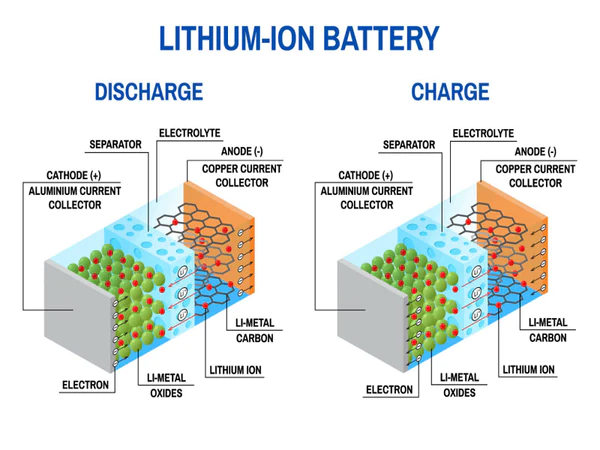The global race for lithium-ion (Li-ion) battery dominance is intensifying, driven by the surge in demand for electric vehicles (EVs), portable electronics, and renewable energy storage solutions. This competition is not just about securing the raw materials necessary for battery production but also involves technological innovation, manufacturing capacity, and market penetration. Key players and emerging markets are positioning themselves strategically to capitalize on this booming industry, which is critical for the transition to a low-carbon economy. This article explores the current landscape of the Li-ion battery market, highlighting the major participants and identifying regions with the potential to influence the future of battery technology and production.

Key Players in the Lithium-Ion Battery Market
- China: China is a frontrunner in the lithium-ion battery industry, home to some of the world’s largest battery manufacturers, such as Contemporary Amperex Technology Co. Limited (CATL) and BYD. The country’s dominance is underpinned by its control over a significant portion of the global supply chain for critical raw materials, extensive manufacturing capacity, and aggressive government policies promoting EV adoption and renewable energy investments.
- South Korea: South Korea boasts leading Li-ion battery manufacturers, including LG Chem, Samsung SDI, and SK Innovation. These companies are renowned for their technological advancements, high-quality products, and global supply chains. South Korea’s government actively supports research and development (R&D) in battery technology and has established strong partnerships with automotive and electronics industries worldwide.
- Japan: Japan has been a pioneer in the development of lithium-ion batteries, with Panasonic being one of the earliest and most influential players. Japanese companies have a strong focus on quality, reliability, and safety standards. Although facing stiff competition from Chinese and South Korean firms, Japanese manufacturers continue to invest in new technologies and maintain significant shares in the global market.
Emerging Markets and Regions
- Europe: Europe is rapidly emerging as a significant player in the Li-ion battery market, driven by a strong push for electrification of transport and a green energy transition. The European Union (EU) is investing heavily in battery cell production facilities, aiming to reduce its reliance on Asian suppliers. Companies like Northvolt in Sweden and ACC (Automotive Cells Company) in France and Germany are leading the way, with support from European automotive giants.
- United States: The U.S. is making strides to catch up in the lithium-ion battery race, with Tesla’s Gigafactory being one of the most high-profile initiatives. The U.S. government’s focus on renewable energy and EV infrastructure, coupled with investments in domestic battery production and technology innovation, aims to bolster the country’s position in the global market.
- Australia and South America: These regions are critical for the supply of raw materials such as lithium, nickel, and cobalt. Australia is the world’s largest producer of lithium, while South American countries, particularly Chile and Argentina, are key players in the lithium triangle. Efforts to move up the value chain by developing local processing and potentially battery manufacturing capabilities are underway.
Challenges and Opportunities
The global race for lithium-ion battery dominance presents both challenges and opportunities. Supply chain security, especially for critical raw materials, environmental and ethical considerations in mining practices, and the need for sustainable recycling and repurposing strategies are among the key challenges. At the same time, advancements in battery technologies, such as solid-state batteries, present opportunities for breakthroughs in energy density, safety, and cost reduction.
Conclusion
The competition in the lithium-ion battery market is a multifaceted battle involving geopolitical, technological, and economic dimensions. As countries and companies vie for dominance, the landscape of the industry continues to evolve rapidly. Strategic investments in R&D, sustainable practices, and international collaborations will be crucial for securing a leading position in this critical sector of the future energy economy. The outcome of this global race will have far-reaching implications for the automotive industry, renewable energy storage, and the broader goal of achieving a sustainable, low-carbon future.
